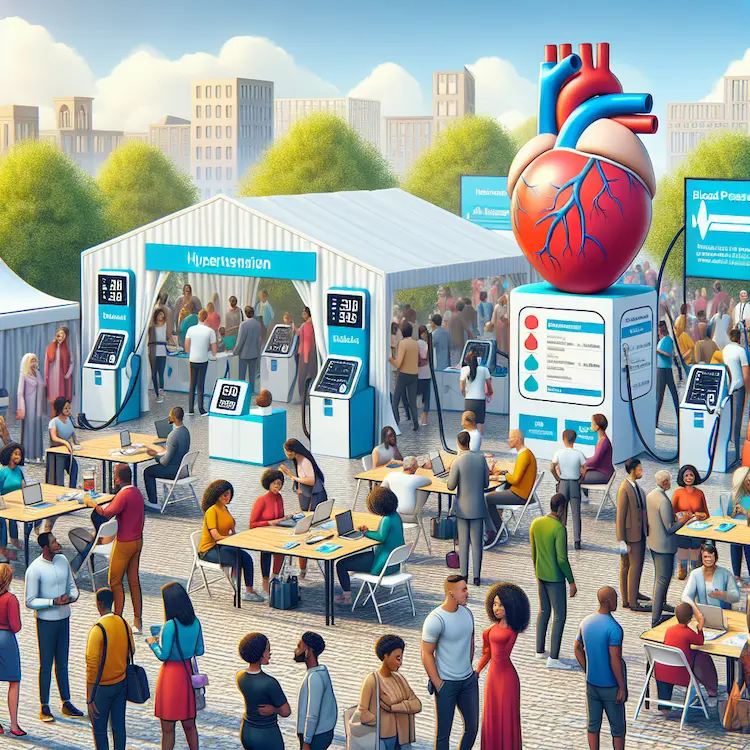Hypertension, commonly known as high blood pressure, is a silent epidemic affecting millions of people worldwide. As a leading cause of cardiovascular mortality, it poses a significant threat to global health. In response to this growing concern, numerous global initiatives have been launched to raise awareness, improve detection, and enhance the management of hypertension. This article explores the various efforts undertaken to combat this pervasive health issue and their impact on public health.
Hypertension awareness is crucial for several reasons:
Despite its significance, global awareness of hypertension remains alarmingly low. The World Hypertension League (WHL) reports that more than 50% of the hypertensive population worldwide are unaware of their condition.

One of the most prominent global initiatives is World Hypertension Day (WHD), observed annually on May 17th. Initiated by the World Hypertension League in 2005, WHD aims to communicate the importance of hypertension and its medical complications to the public.
The impact of WHD has been significant. In 2007, 47 member countries participated, reaching over 250 million people through various media channels and public rallies.
While global campaigns like WHD play a crucial role, regional initiatives tailored to specific populations have also shown promising results.
The World Heart Federation, in partnership with Resolve to Save Lives and the Pan-African Society of Cardiology (PASCAR), launched an initiative to implement WHO Guidelines on Hypertension in Africa. This program targets 10 Sub-Saharan African countries where the burden of hypertension is significant.
A study in India demonstrated the effectiveness of community-based interventions in improving hypertension awareness and control. The odds of awareness increased by 4.18 times, treatment by 3.44 times, and control by 4.39 times after a six-year intervention program using trained local volunteers.
The World Health Organization (WHO) has partnered with Resolve to Save Lives and other organizations to implement the Global HEARTS Initiative. Since its inception in 2017, this program has been implemented in 31 low- and middle-income countries, putting 7.5 million people on protocol-based hypertension treatment.
To better understand the global landscape of hypertension awareness, let’s compare awareness levels across different regions:
| Country/Region | Awareness Level | Source |
|---|---|---|
| Canada | 58% |
1
|
| United States | 61% |
7
|
| China | 49% |
7
|
| Kerala, India (Rural) | 36% |
7
|
| Kerala, India (Urban) | 39% |
7
|
This comparison highlights the disparities in awareness levels and underscores the need for targeted interventions in regions with lower awareness.
A study in Ontario, Canada, utilized a social marketing approach to increase hypertension awareness. The campaign incorporated television, radio, print, and interactive techniques, demonstrating the potential of multi-channel communication strategies.
In Italy, the Italian Society of Hypertension partnered with the Giro d’Italia cycling race to educate the population about blood pressure control. This innovative approach leveraged the popularity of the event to reach a wide audience.
Mobile health applications and telemedicine have emerged as powerful tools for hypertension awareness and management. These technologies enable remote monitoring, personalized education, and improved access to healthcare professionals.
Despite progress, several challenges persist in global hypertension awareness efforts:

Based on the success of various global initiatives, the following recommendations can enhance hypertension awareness:
Global initiatives for hypertension awareness have made significant strides in recent years, but there is still much work to be done. The success of programs like World Hypertension Day and community-based interventions demonstrates the potential for widespread impact. By combining innovative approaches, leveraging technology, and addressing regional disparities, we can continue to improve hypertension awareness and ultimately reduce the global burden of cardiovascular disease.
As individuals, we can contribute to this global effort by regularly checking our blood pressure, adopting healthy lifestyles, and spreading awareness within our communities. Together, we can combat the silent epidemic of hypertension and work towards a healthier world.